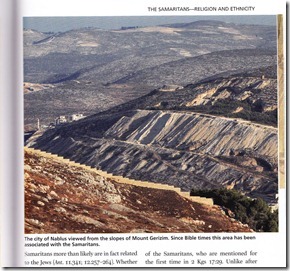Did the synagogue save Judaism? Paul V. M. Flesher answers the question in a new essay at the Bible and Interpretation, observing that “Judaism is the only Mediterranean religion that was practiced in 50 BC that still flourished in 500 AD.” He also addresses the “two-hundred-year gap” when there were allegedly no synagogues in the Holy Land.
NUMIDAT is a new one-of-a-kind online database of ancient coins, containing nearly 90,000 records.
Wayne Stiles hears echoes of Rosh Hashana in the ruins of the Temple Mount. Yoni Cohen recommends a six-hour hike in the Negev.
Now that 1,200 mines have been cleared, excavations have begun at ancient Carchemish. The team is comprised of 25 Italian and Turkish archaeologists who hope to transform the site into an archaeology park. One official eager for tourists said, “I hope [the excavation] does not take very long.” (Background and photos here and here.)
Leen Ritmeyer notes upcoming lectures at the Palestine Exploration Fund in London.
The Preserving Bible Times Collection (5 vols) for Logos Bible Software quickly received the minimum number of orders and is now under development. The discount is valid until the collection ships.
The Israel Museum is selling some of its artwork.
If you are looking for results for an excavation in Israel, particularly of a smaller site, the search page for Hadashot Arkheologiyot is the place to start. The content is all free.
ASOR has a roundup of stories in the broader world of archaeology.
I thought that the photo below was hilarious. If you’ve always wondered what that combustible city of Nablus looks like, you can find the answer in William A. Simmons, Peoples of the New Testament World (Hendrickson, 2008). (To see what they cropped out of the photo, compare it with this one.)
HT: Benj Foreman

5 thoughts on “Weekend Roundup”
"…that combustible city of Nablus"? What makes Nablus (or any other city) "combustible"? I don't get it.
TOM POWERS / Jerusalem
Tom – my intention was to allude to Nablus's history of violence. It is not relevant to the point of the photo, but it may remind (most) people why they have never visited it. The turmoil goes back to the days of Labayu and Rehoboam, as well as under various administrations in the 20th century.
"…various administrations in the 20th century." I guess you mean when the IDF would go in and shoot up the place and kill lots of people. I agree, things did get a bit combustible at times. -TP
OK, I have taken a deep breath and have one last comment (I promise) on Nablus, completely serious this time. Painting the city of Nablus as "combustible" implies that it is not safe for people to visit there, which is certainly NOT the case, and has not been the case for years. I take people there fairly regularly, am taking an American seminary professor there next Sunday and another American couple in a few weeks. Mt. Gerizim, Tel Balata (now getting a facelift), Jacob's Well, ancient Samaria-Sebastia: no problem. I usually do not take people to the so-called Tomb of Joseph for the simple reason that it has been a particular flash point at times, when, frankly, extremist Jewish settlers try to force their way into town and descend upon the site en masse without the required IDF permission and supervision. Israelis will tell you grimly, of course, that Nablus is not safe, but how would they even know? Israeli citizens — including tour guides — are not currently allowed to go there ("Area A") at all, by Israeli law. However, that should not keep anyone else away who has an interest and wishes to visit this area rich in history and biblical connections.
TOM POWERS / Jerusalem
Tom – I didn't mean only the IDF. My understanding, though I cannot document this at the moment, is that Nablus was a thorn in the side of the Jordanian administration and before that the British and the Ottoman. If that is false, I'd like to know.
I'm very happy to hear of the safety of Nablus and I certainly wouldn't want to discourage anyone from visiting. As you know, the situation could change tomorrow, and when it does, Nablus will be the first place to avoid.
I would disagree with the assertion that one cannot know that a place is not safe if one has not been there. It may be true with regard to Nablus today, though I have often felt in my travels in the Middle East that while I was safe as an American, I would not have been safe as an Israeli.
What did you think about the photo? That was the point and the result of some effort. The adjective that has caused all this discussion received barely a moment's thought.
You're welcome to comment further but I'll be unable to respond for several days.